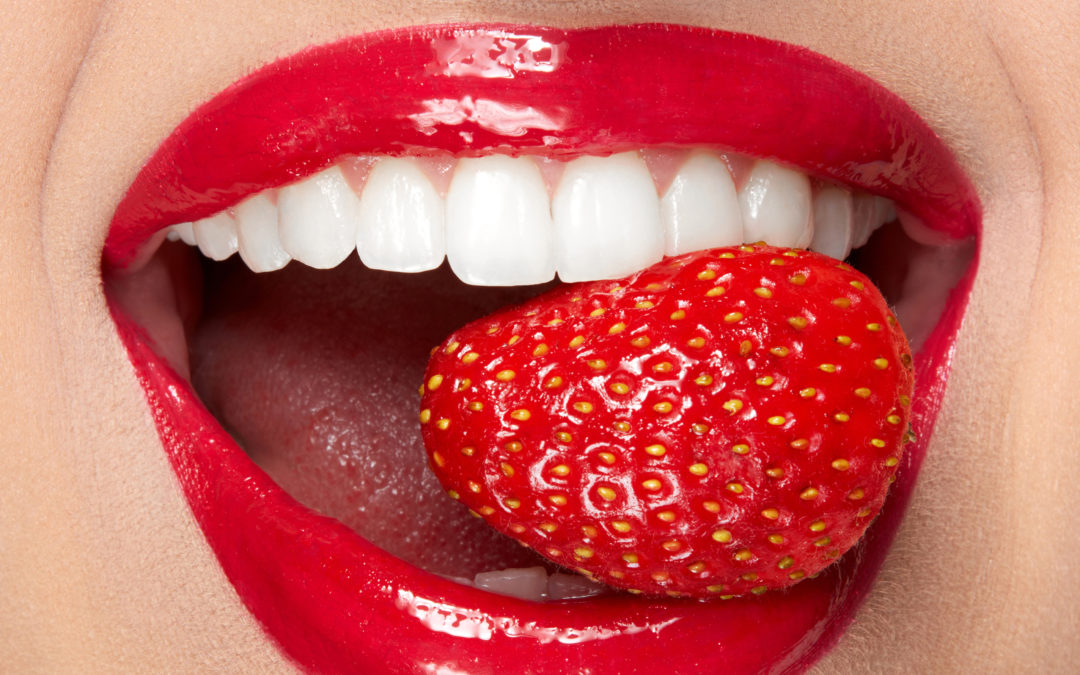Dr. Kurthy, Founder of KöR Whitening, Talks About Whitening Your Teeth With Strawberries.
I’ve again been asked to comment on a popular DIY (Do it yourself) method of whitening teeth. This time using strawberries. In fact, this ridiculous method has even been recommended by the “all knowing” Dr. Oz.
- Do strawberries help whiten your teeth (at least a little)? No, but they may make your teeth “appear” brighter.
- Should you use this method of teeth whitening? No.
- Can using strawberries to whiten your teeth be damaging to your teeth? Yes.
You may have seen one of my blog posts with my comments on another DIY teeth whitening method: Whitening with apple cider vinegar and baking soda. What I said in that blog also applies to this strawberry DIY whitening method. Why? Because both apple cider vinegar and strawberries utilize the use of acid. So the same dangers to your teeth apply.
First I’ll explain the most commonly recommended method of using strawberries:
- Mash up strawberries
- Mix the mashed strawberries with baking soda
- Recommended methods of application:
- Use a soft toothbrush (or any other method) to spread the mixture onto your teeth. Leave on for 5 minutes, then brush thoroughly with toothpaste to remove the strawberry/baking soda mix. Rinse.
- Apply the mixture to the teeth and continuously rub it into the teeth with your finger for 5 minutes. Brush. Rinse.
Have you ever noticed that strawberries taste “tangy” (a little sour)? This is because of acid. Acid tastes sour. For example, lemons are extremely sour due to large amounts of citric acid. In fact, the original fruit suggested for use with this so-called whitening technique was lemons…until the major backlash due to the highly dangerous potential for damage to teeth by high levels of citric acid in lemons.
So, how and why are strawberries supposed to whiten your teeth?
As I indicated, strawberries and other tangy or sour fruits contain acid, as well as the apple cider vinegar mentioned above. Strawberries contain both citric and malic acid.
By applying an acidic mixture to your teeth, and especially letting it sit on the teeth for a few minutes, the acid eats/erodes/dissolves away and softens some of the surface tooth structure. Then when brushing your teeth, the abrasiveness of the baking soda, toothpaste and toothbrush bristles actually “brushes away” a thin layer of the surface of your tooth enamel.
Do your teeth then appear brighter? Possibly. If you had some surface stain on your teeth, then yes, by removing a thin layer of tooth structure, the stain on that tooth structure also is removed. But the underlying tooth structure is certainly no lighter than it was before the DIY treatment.
If your teeth were already stain-free, then no, your teeth will be no whiter than before.
To truly whiten tooth structure, the whitening agent MUST be able to microscopically penetrate deeply into the tooth structure, affecting the darker molecules within your tooth structure, turning those molecules white. In a practical sense, the only agent to consider that will do that is peroxide.
So what types of things that you could put on your teeth would actually damage the structure of your teeth? Acid. In fact, that’s even how tooth decay (cavities) occurs.
We’ve all heard that bacteria (dental plaque) is bad for our teeth. And we’ve heard that sugar can cause cavities. There’s a certain type of bacteria in dental plaque that loves to eat sugar. And after eating sugar, these same bacteria give off lactic acid. It’s this lactic acid that eventually eats holes in our teeth, which are cavities.
- Eating strawberries? Good.
- Mashing strawberries, mixing with baking soda, placing on your teeth for 5 minutes and then brushing your teeth? Bad.


